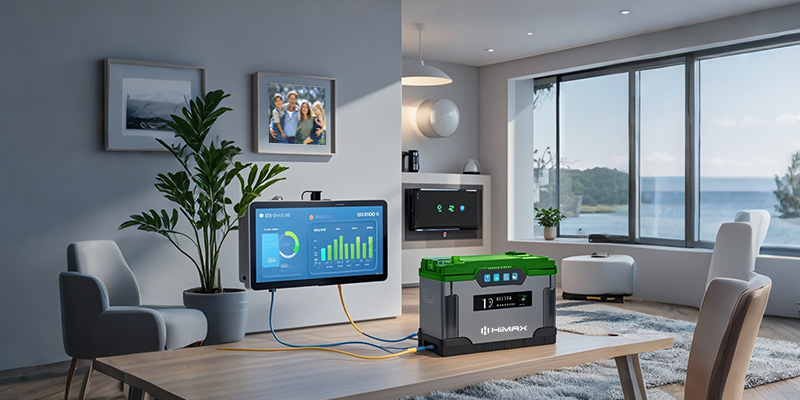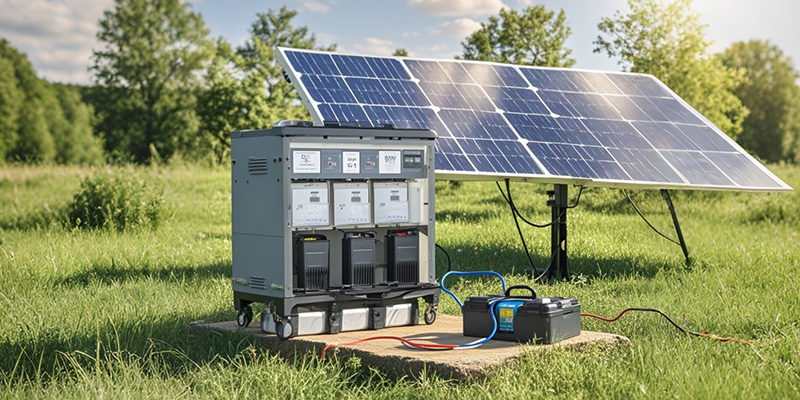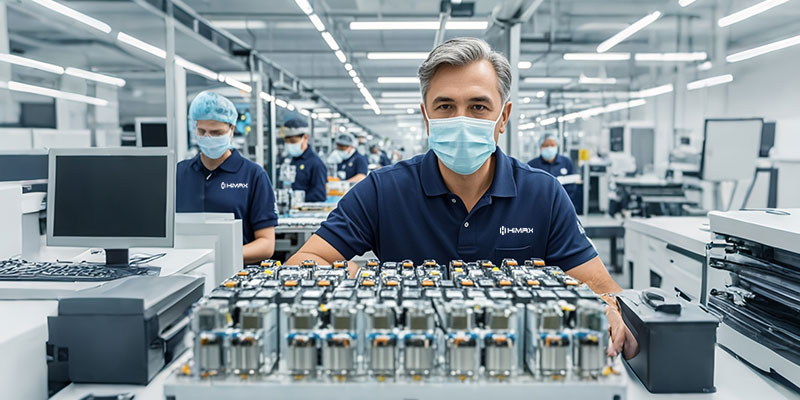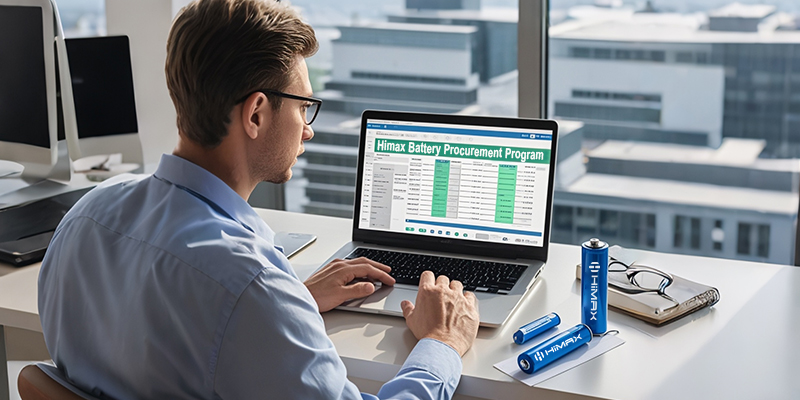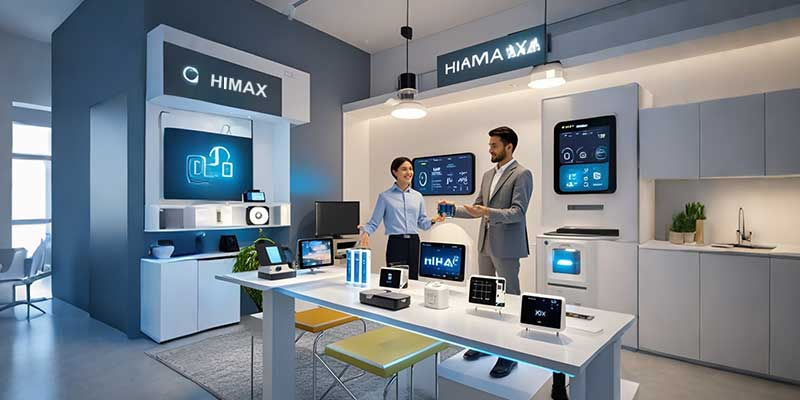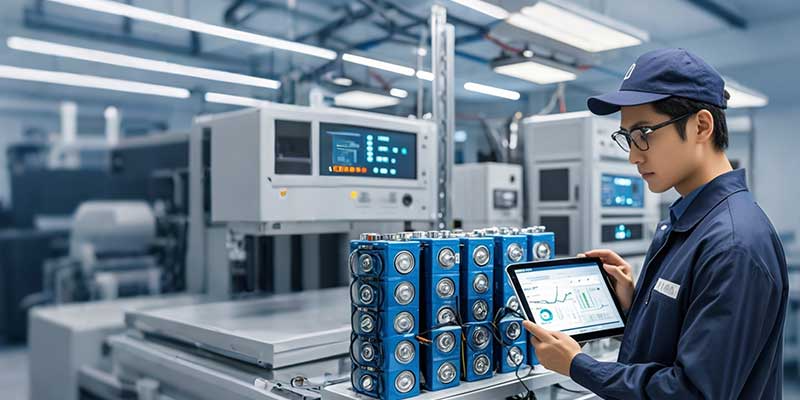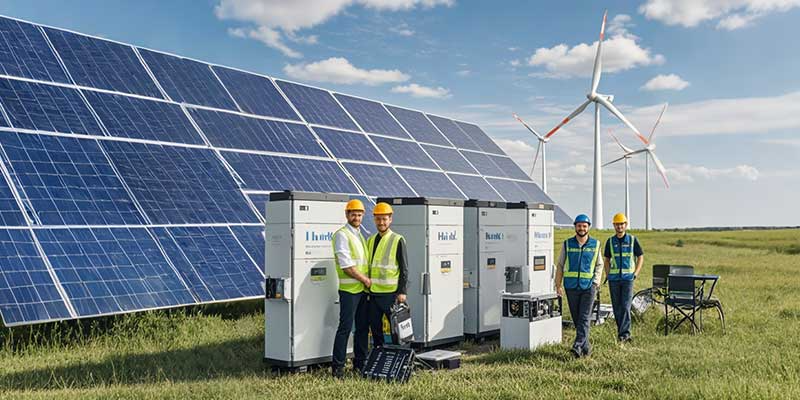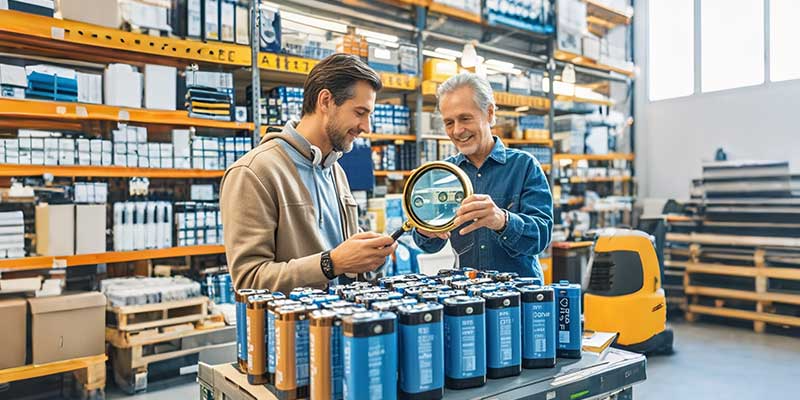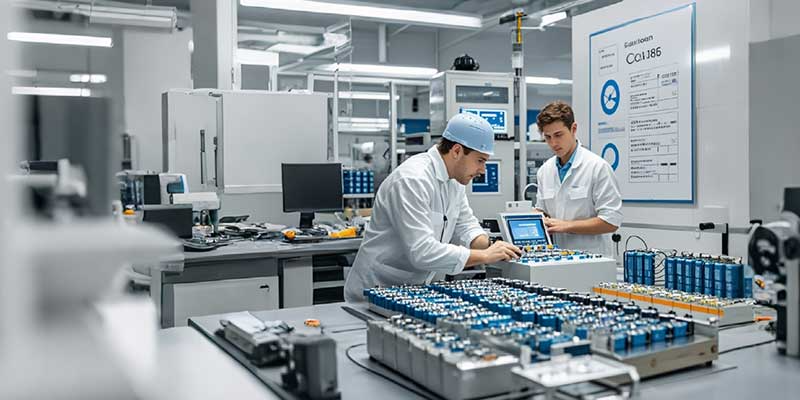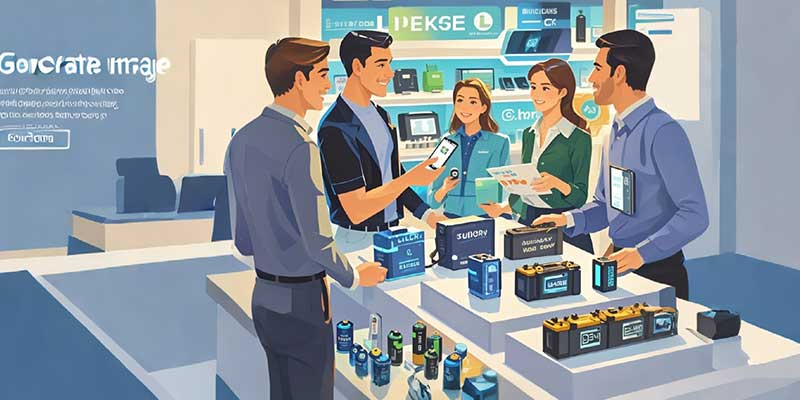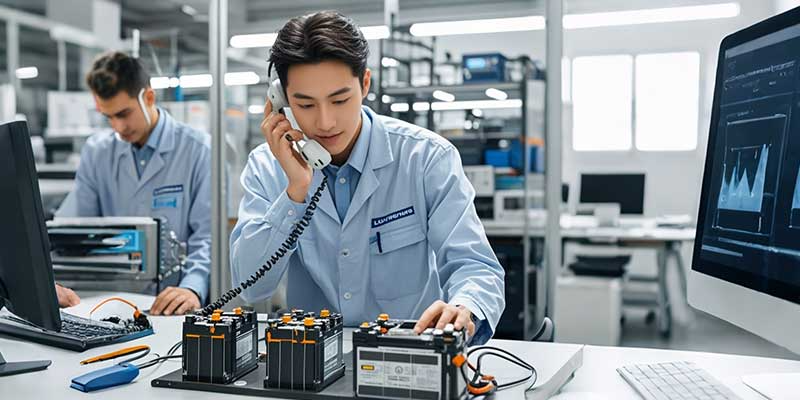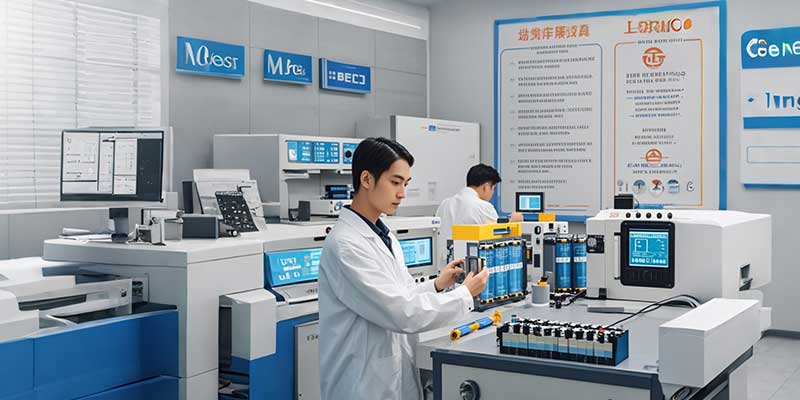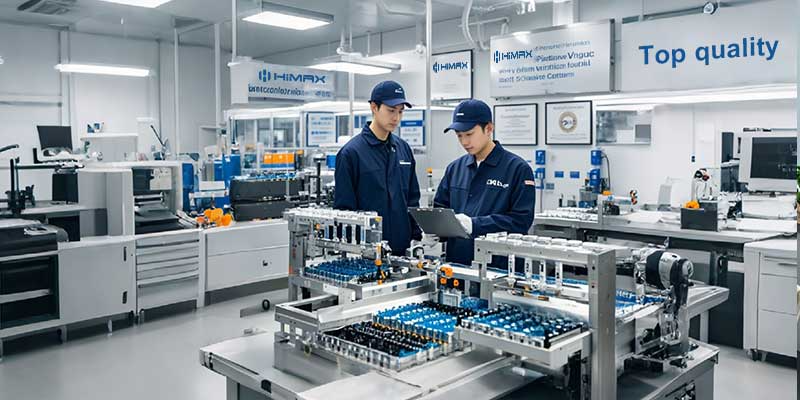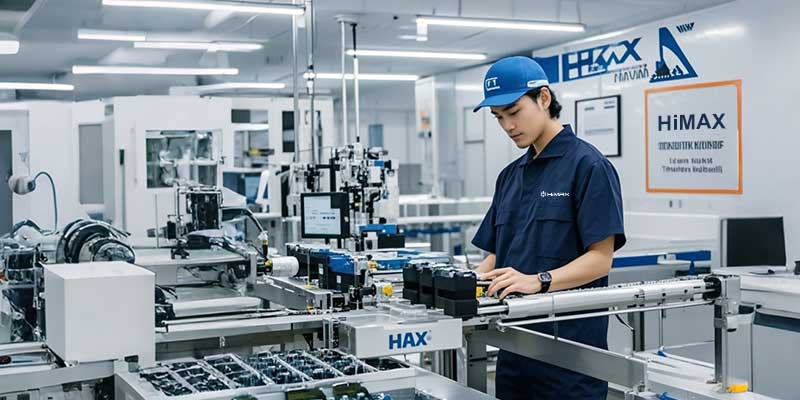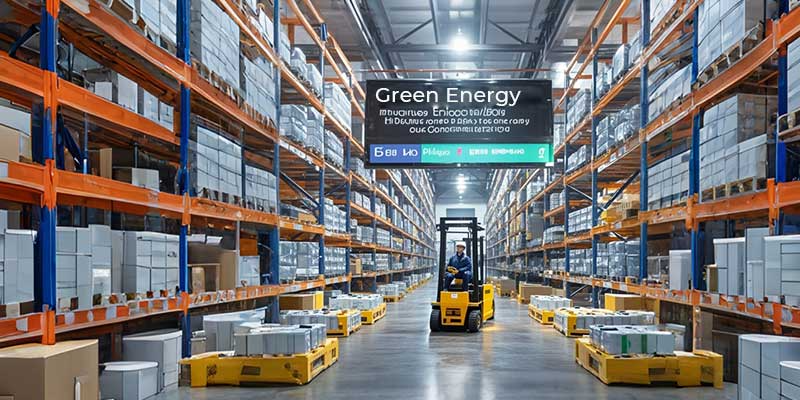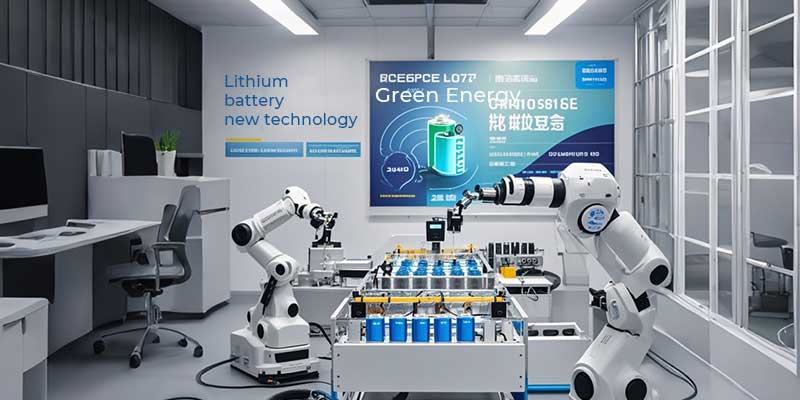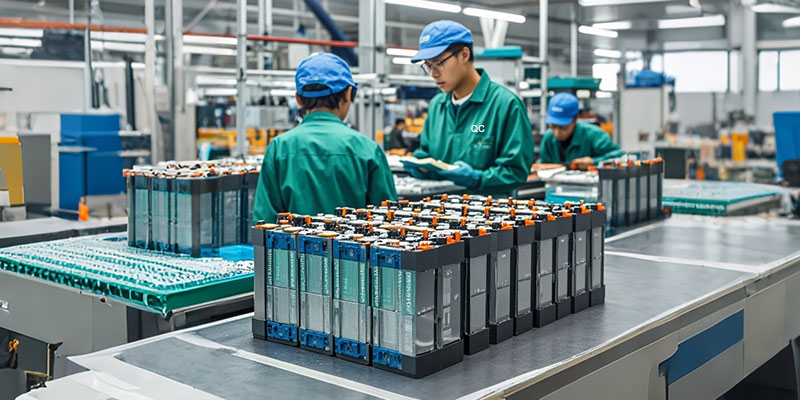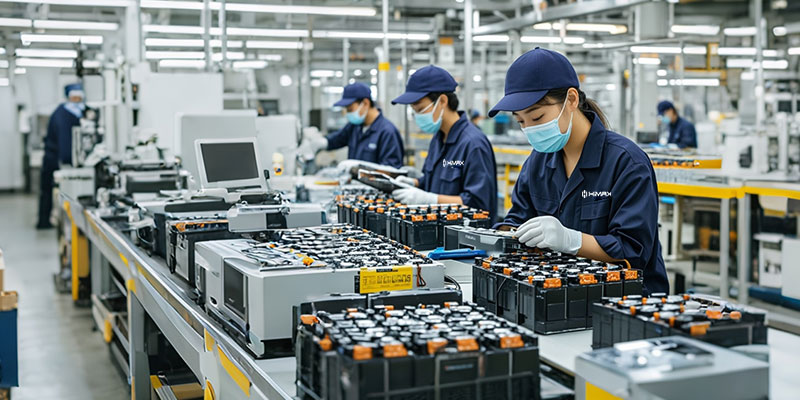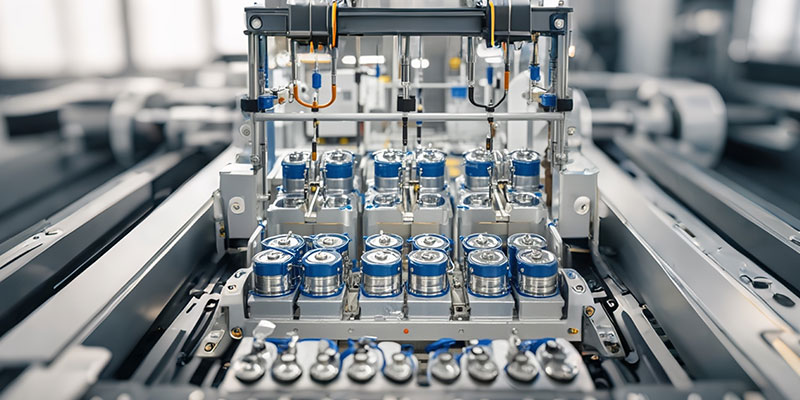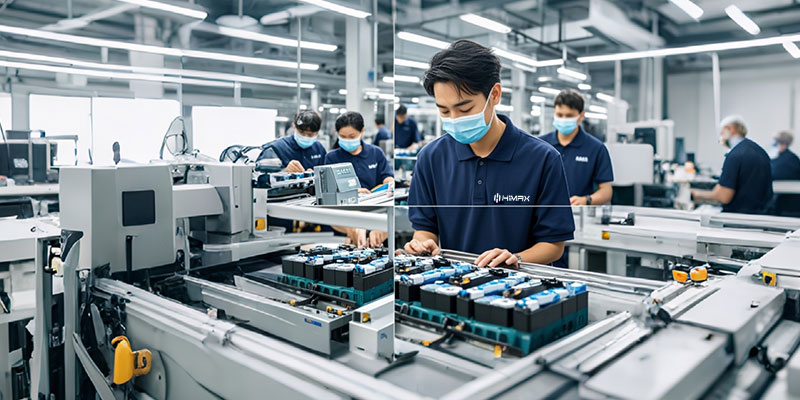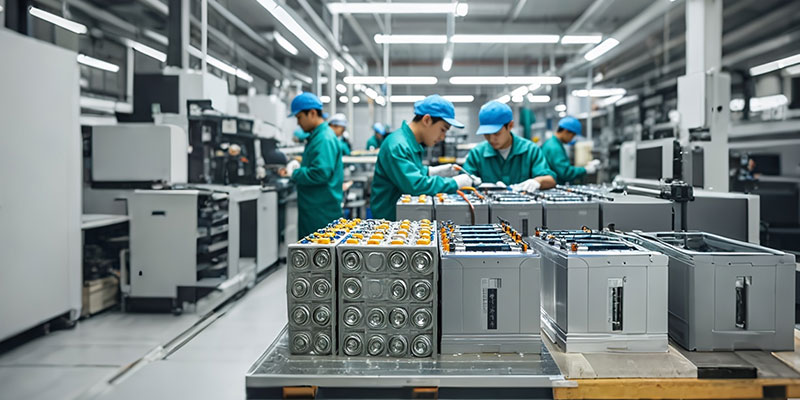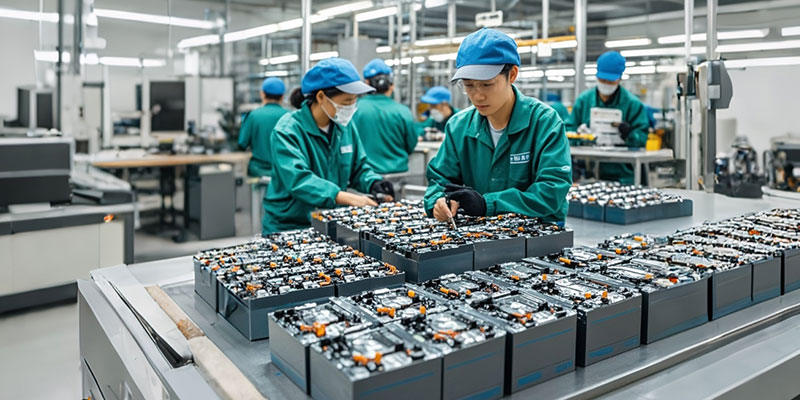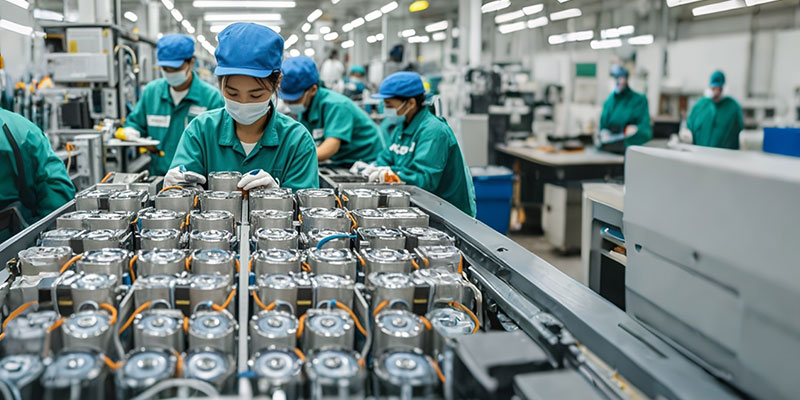Introduction
In today’s market, the quality and safety of batteries are crucial for the overall performance and lifespan of products, especially in industries like electric vehicles, consumer electronics, and renewable energy storage. Choosing a reliable battery manufacturer is key to ensuring these standards. In this article, we will explore the critical factors to consider when selecting a battery manufacturer, with a focus on ensuring quality and safety.
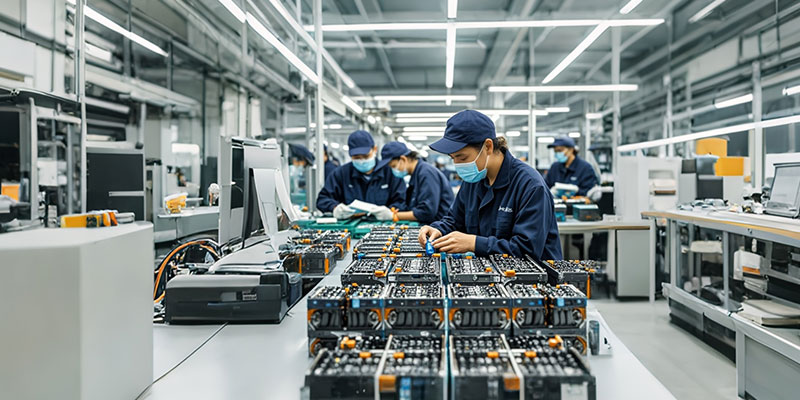
Why Choosing a Reliable Battery Manufacturer is Crucial
Selecting a reliable battery manufacturer is not just about price; it directly impacts product performance, user safety, and your brand’s reputation. The risks associated with choosing a low-quality manufacturer include increased chances of battery failure, safety hazards, and even legal liabilities. Furthermore, working with a dependable manufacturer can result in long-term cost efficiency, fewer returns, and greater customer satisfaction.
Key Evaluation Factors for Battery Manufacturers
- Quality Assurance and Certifications
One of the first things to look for in a battery manufacturer is their adherence to quality assurance standards and certifications. Reliable manufacturers typically hold various certifications that guarantee they follow internationally recognized quality and safety standards:
- ISO Certifications: Look for ISO 9001 for quality management and ISO 14001 for environmental management. These certifications ensure the manufacturer meets stringent quality controls and sustainability standards.
- Safety Standards: Certifications such as UL, IEC, and UN 38.3 demonstrate compliance with safety standards. UL certification, for example, is crucial for batteries used in consumer electronics, while UN 38.3 is necessary for the safe transportation of lithium batteries.
- Manufacturing Experience and Technical Capability
A manufacturer’s experience in the industry is a strong indicator of their reliability. Look into the manufacturer’s production history, the types of batteries they specialize in, and the industries they serve. Technical capability is also essential—does the manufacturer invest in R&D? Are they leveraging the latest advancements in battery technology? A manufacturer with a track record of innovation is more likely to provide quality products that meet your specific needs.
- Supply Chain Management
A reliable supply chain is the backbone of quality battery production. A trustworthy manufacturer should have a transparent supply chain, sourcing materials from reputable suppliers. Ensure that they use high-quality components, such as lithium-ion cells from leading brands, and that they maintain sustainable sourcing practices.
Supply chain stability is also a key factor. A manufacturer with a stable and diversified supply chain is less likely to face disruptions, ensuring that you receive your products on time and without compromise on quality.
- Production Capacity and Lead Times
Another crucial factor is the manufacturer’s ability to meet your production needs, especially if you have large-scale requirements. Assess their production capacity, the level of automation in their production lines, and their ability to scale up as demand increases. A manufacturer with flexible production capabilities will be able to accommodate your growth without delays.
- Customization and Technical Support
Different industries and products have unique battery requirements, so the ability to customize battery solutions is an essential consideration. Check if the manufacturer offers customization options such as different voltages, sizes, or packaging.
In addition, technical support and after-sales service are important aspects of a reliable partnership. Ensure that the manufacturer is responsive and has a team that can provide quick solutions to any issues that arise during or after production.
- Industry Reputation and Customer Reviews
One of the most effective ways to evaluate a battery manufacturer is to look at their reputation in the industry. Seek out testimonials, case studies, and customer reviews. You can also check for online reviews or third-party evaluations to gauge the manufacturer’s reliability. Working with a manufacturer that has a proven record of satisfied customers reduces the risks associated with poor quality or unreliable service.
Battery Safety: A Key Consideration
Ensuring battery safety is a non-negotiable aspect of selecting a manufacturer. Ask potential manufacturers about their safety testing protocols. Reliable manufacturers conduct extensive safety tests to prevent issues such as overheating, short circuits, and thermal runaway.
- Thermal Runaway Protection: Find out what measures the manufacturer takes to prevent thermal runaway, a major safety concern for lithium-ion batteries.
- Storage and Transportation: Proper compliance with safety regulations for battery storage and transportation (such as UN 38.3) is essential to prevent any accidents during transit.
How to Establish a Partnership with a Battery Manufacturer
Once you’ve identified a promising manufacturer, it’s important to establish a strong working relationship. Consider visiting their facilities for a factory tour and to verify their claims regarding production capabilities and quality standards. Request sample batteries and conduct rigorous performance testing to ensure they meet your specifications.
Also, be thorough when negotiating terms. Make sure all details regarding lead times, quality guarantees, and pricing are clearly defined in the contract. This will help avoid misunderstandings and ensure a smooth partnership.
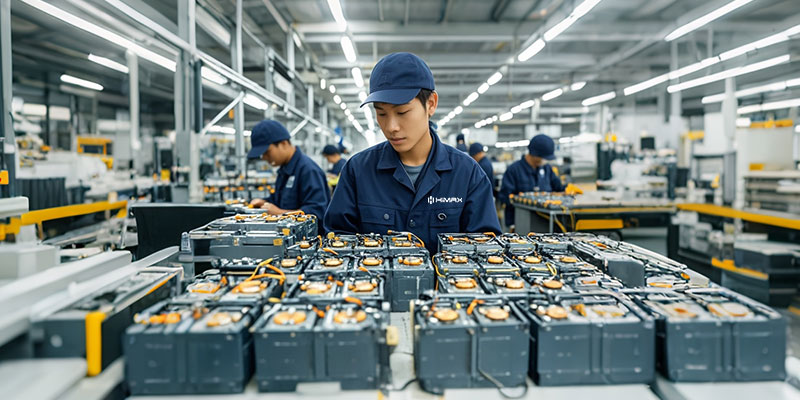
Himax Electronics: Your Ideal Battery Partner
At Himax Electronics, we understand the importance of high-quality and safe battery(LIFEPO4 BATTERY) solutions. With years of experience in the industry, we have built a reputation for delivering top-notch battery products that meet rigorous international standards. Our facilities are certified to ISO 9001 and ISO 14001 standards, and our products comply with key safety certifications like UL and UN 38.3.
We are committed to innovation and sustainability, constantly investing in new technologies to meet the evolving needs of our customers. Whether you need customized battery solutions or reliable technical support, Himax Electronics is your ideal partner for quality, safety, and long-term success.
Conclusion
Choosing a reliable battery manufacturer is a crucial step that affects your product quality, safety, and overall business success. By considering factors like certifications, manufacturing experience, supply chain stability, and safety testing, you can make an informed decision that will benefit your brand and your customers.
We hope this guide has provided you with valuable insights into selecting the right battery manufacturer. If you are looking for a partner with a proven track record in quality and reliability, consider Himax Electronics for your battery needs.

